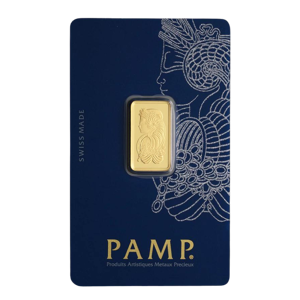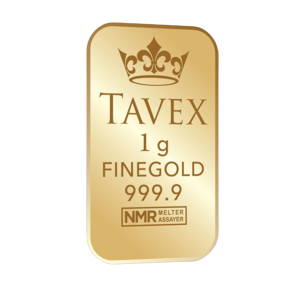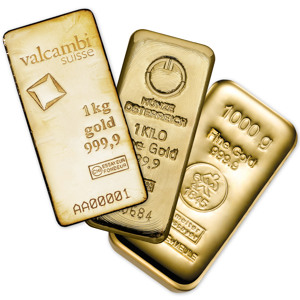Tavex uses cookies to ensure website functionality and improve your user experience. Collecting data from cookies helps us provide the best experience for you, keeps your account secure and allows us to personalise advert content. You can find out more in our cookie policy.
Please select what cookies you allow us to use
Cookies are small files of letters and digits downloaded and saved on your computer or another device (for instance, a mobile phone, a tablet) and saved in your browser while you visit a website. They can be used to track the pages you visit on the website, save the information you enter or remember your preferences such as language settings as long as you’re browsing the website.
| Cookie name | Cookie description | Cookie duration |
|---|---|---|
| tavex_cookie_consent | Stores cookie consent options selected | 60 weeks |
| tavex_customer | Tavex customer ID | 30 days |
| wp-wpml_current_language | Stores selected language | 1 day |
| AWSALB | AWS ALB sticky session cookie | 6 days |
| AWSALBCORS | AWS ALB sticky session cookie | 6 days |
| NO_CACHE | Used to disable page caching | 1 day |
| PHPSESSID | Identifier for PHP session | Session |
| latest_news | Helps to keep notifications relevant by storing the latest news shown | 29 days |
| latest_news_flash | Helps to keep notifications relevant by storing the latest news shown | 29 days |
| tavex_recently_viewed_products | List of recently viewed products | 1 day |
| tavex_compare_amount | Number of items in product comparison view | 1 day |
| Cookie name | Cookie description | Cookie duration |
|---|---|---|
| chart-widget-tab-*-*-* | Remembers last chart options (i.e currency, time period, etc) | 29 days |
| archive_layout | Stores selected product layout on category pages | 1 day |
| Cookie name | Cookie description | Cookie duration |
|---|---|---|
| cartstack.com-* | Used for tracking abandoned shopping carts | 1 year |
| _omappvp | Used by OptinMonster for determining new vs. returning visitors. Expires in 11 years | 11 years |
| _omappvs | Used by OptinMonster for determining when a new visitor becomes a returning visitor | Session |
| om* | Used by OptinMonster to track interactions with campaigns | Persistent |
| Cookie name | Cookie description | Cookie duration |
|---|---|---|
| _ga | Used to distinguish users | 2 years |
| _gid | Used to distinguish users | 24 hours |
| _ga_* | Used to persist session state | 2 years |
| _gac_* | Contains campaign related information | 90 days |
| _gat_gtag_* | Used to throttle request rate | 1 minute |
| _fbc | Facebook advertisement cookie | 2 years |
| _fbp | Facebook cookie for distinguishing unique users | 2 years |
Gold Demand Remains Strong in the Third Quarter

In the third quarter of this year, gold demand increased by 5% compared to the same period in 2023. Central bank purchases remain the main drivers of this demand, but to a significant extent we also see speculation about future increases in the prices of the yellow metal.
With increasing media coverage of gold – with the price up 35% this year alone – investors are drawn to the potential profit. This is one reason why, even when both supply and demand for gold rose by 5%, the price showed more substantial gains.
OTC Gold Demand in T3 2024

Following the trend from the second quarter of this year, T3 continues with impressive demand volumes. OTC demand refers to trades made directly between two parties, rather than on exchanges, as would be the case with exchange-traded funds.
OTC demand has nearly doubled in the past year, largely thanks to high-net-worth individuals and large financial institutions diversifying their portfolios. This is a natural reaction to two years of allocations in stocks and high-yield government bonds.
Demand for Investment Gold in T3 2024

As we’ve highlighted in several other articles on our blog, investment gold refers to physical gold coins and gold bars, but also to gold backed exchange-traded funds (ETFs).
There is a clear definition of the two – and it is important to understand their price fluctuations to see how the market develops over time. Overall, we are seeing a significant level of speculation in the price of gold, driven by demand for ETFs rather than physical coins and bars.
Search for Investment Gold Coins and Bars

Demand for investment gold coins and bars has declined by 9% over the past year. The main reason is significantly high demand in 2023, but also selling pressure as the price of gold hit record highs every month in the third quarter. The most significant declines in demand were in Europe (-42%, after a 56% decrease in the third quarter of 2023 compared to 2022) and China (-24%).
Europe has recently become synonymous with stagnation.
With a real gross domestic product (GDP) growth rate of 0.8% in the second quarter of 2024, the Old Continent faces serious problems. The worst affected country appears to be Germany, which is steadily slipping back into recession. Earlier this week, Volkswagen announced plans to close at least three factories, which would mean the loss of tens of thousands of jobs.
India, however, is the country with the largest increase in gold demand , up 41%. This comes on the heels of the Indian government’s decision to cut customs duties by up to a third on gold composites and alloys. South Korea (+36% in demand) and Taiwan (+28%) followed, both driven by profit opportunities and geopolitical developments.
Digging Up Gold ETFs

However, demand for gold ETFs – visible through capital flows – paints a very different picture. Throughout the third quarter, we saw a net global inflow into gold holdings of 95 tonnes of gold. The current holdings of these ETFs reach 3,200 tons of gold. The main drivers are inflows from North America (mostly the United States, with 59 tonnes added) and Europe (with 22.73 tonnes added).
INFOFRAM
As we can see, European gold ETFs have registered the first quarter-on-quarter net inflow since Q1 2022 , just as Russia invaded Ukraine. On the other side of the Atlantic, North American gold ETFs have seen no net inflows in the entire quarter since the second quarter of 2023. This marks the taming of the inflationary wave following the COVID-19 lockdowns.
However, given the rate cut cycle in both the Eurozone and the United States, we can expect future inflows into these ETFs
This is due to the reduction in the opportunity cost of holding gold. Opportunity costs refer to the potential gains from investing in other instruments to the detriment of gold, such as US Treasuries. When interest rates continue to decline, the yield on these bonds also declines, making gold more attractive to investors.
Central Bank Gold Demand in Q3 2024

Central banks around the world continue the trend of gold purchases. Net acquisitions equaled 186.3 tonnes between July and September, almost half the demand recorded in Q3 2023.
Even with this lower amount of central bank purchases, year-to-date acquisitions (between January and September) were 694 tonnes net.
That’s just 1% below the amount bought in the first nine months of 2022, when central banks bought the largest amount of gold on record
The biggest buyer this year so far is the National Bank of Poland (+42 tons). The NBP governor, Adam Glapinski, plans to increase the country’s gold reserves to 20% of international reserves. Currently, with 420 tonnes in reserves, gold represents 16% of Poland’s total reserves.
In second place, surprisingly, is the National Bank of Hungary. In the third quarter of this year, the Hungarian central bank bought a total of 14.5 tons of gold, increasing its reserves from 94.5 tons to 110 tons. Thus, Hungary has the largest gold reserves in the Balkans, ahead of Romania with 103.6 tons of gold reserves. The National Bank of Hungary’s motivation for increasing gold reserves was:
In the context of increasing uncertainty in the global economy as a whole, gold’s role as a safe haven and store of value is of particular importance as it strengthens domestic confidence and supports financial stability
Other important buyers of gold were India (+13 tons), Azerbaijan (+12 tons), Turkey (+10 tons), Uzbekistan (+9 tons), Serbia (+5 tons), Czech Republic (+5 tons), Qatar ( +2 tons), Jordan and Iraq (one ton each).
Selling pressure came from only three central banks, namely Kazakhstan (-13t), the Philippines (-2t) and Mongolia (-1t).
Gold Jewellery Demand in T3 2024

Accounting for almost half of the global demand for gold, the jewellery market is very important. Globally, demand for gold jewellery declined by 12% in Q3 2024 compared to Q3 2023. The most significant declines were recorded in Asia and the Middle East.
Against the backdrop of record high prices, investors from the Arab world, China and Sri Lanka pulled back from continued jewellery purchases. According to the World Gold Council, even those customers who still buy gold jewellery prefer to buy smaller pieces with higher gold content and intricate designs. In light of rising prices, not only has demand for jewellery registered lower values, but there has also been increased pressure to sell gold.
Gold Supply in Q3 2024
According to the most fundamental law of economics – that of supply and demand – after the extensive analysis of the country of gold demand, I will now highlight the main aspects of the supply of gold in the third quarter of this year. Global gold supply rose 5% compared to the third quarter of 2023. Not only that, but the third quarter of this year was a record for gold mined, reaching 990 tons. We observe the same trend in the first and second quarters. Both became record quarters since 2000, when the World Gold Council began collecting data.
Recycled gold, mainly a product of the jewellery sector, recorded an 11% increase in supply. As mentioned above, the main reason is due to the increase in gold prices, which prompted people all over the world to sell their gold jewellery.
Producers’ net hedge, which shows how gold producers and refiners are positioned to gold price volatility, was 0.2 tonnes. This means that there is virtually no interest on the part of suppliers to lock in prices for future sales.
Conclusion
The gold market in the third quarter saw some changes compared to the previous quarter. China is facing serious demand problems, while India appears to be taking the lead in global gold demand. With a major reduction in gold import duties into the country, demand is on the rise in the world’s most populous country.
Similar surprises come from central banks, which, to a much lesser extent, continue to buy gold. Poland and Hungary, the countries on the gray list of the EU , show conservative monetary policy solutions, as opposed to the expansionist policy of the Western countries.
Future prospects for how gold demand will play out in the remaining two months of this year show potential for demand growth. The main reason is the profit-seeking behaviour of speculators, but also the great gap between Western and Eastern nations.

















